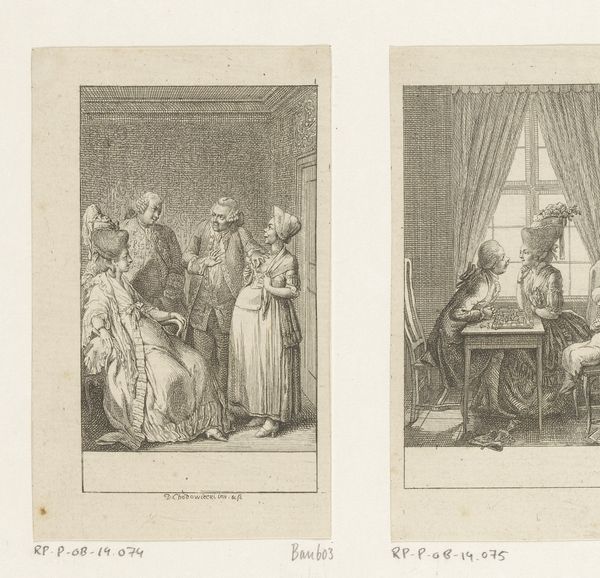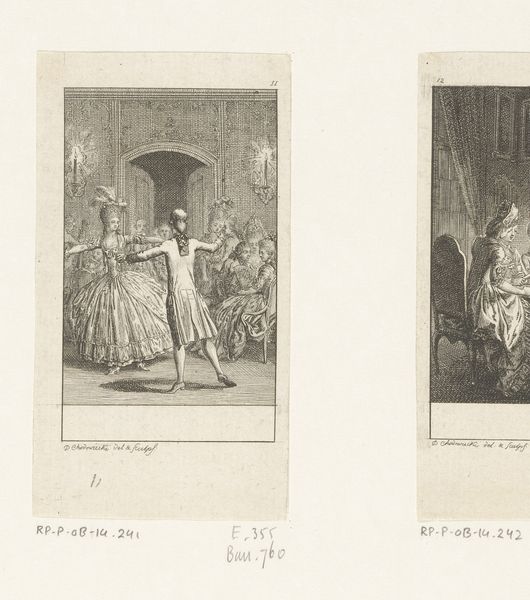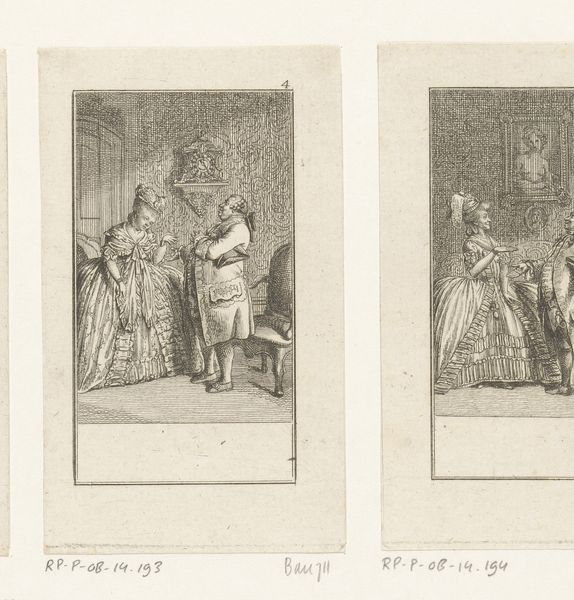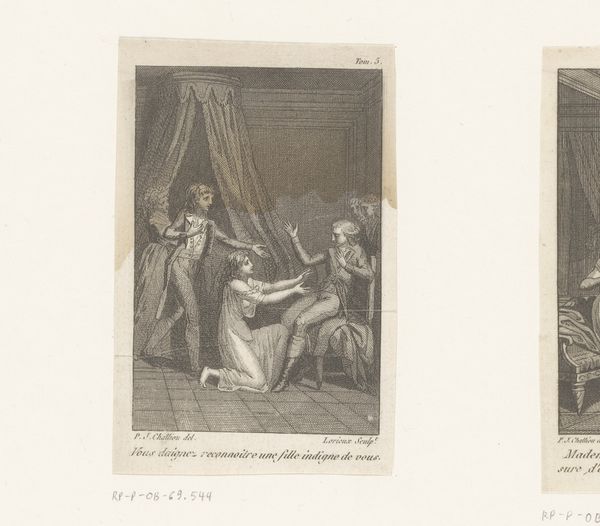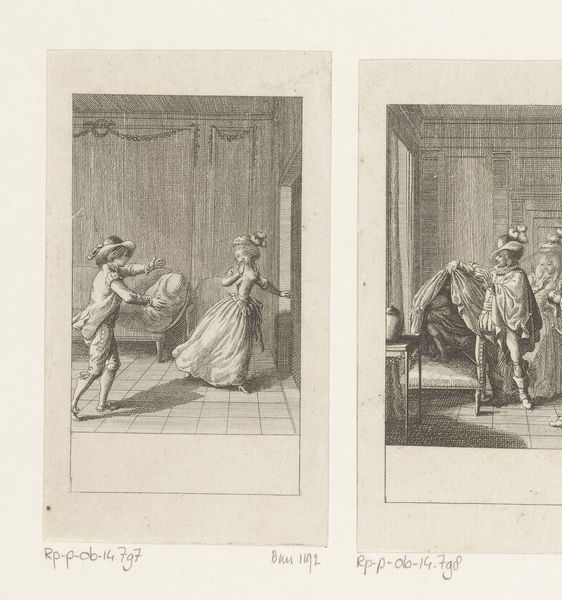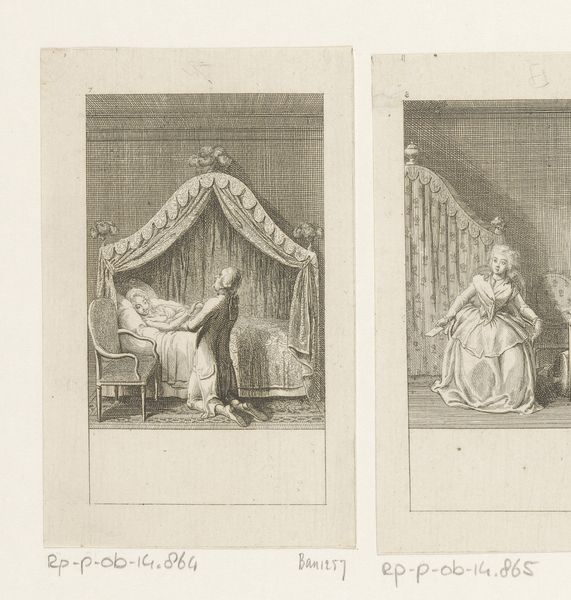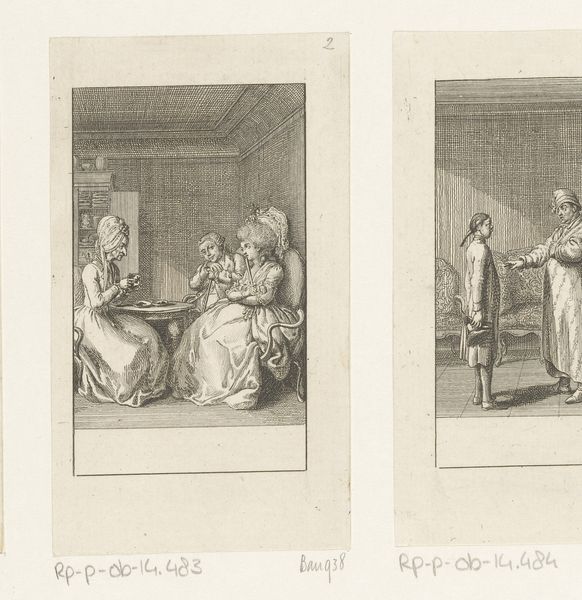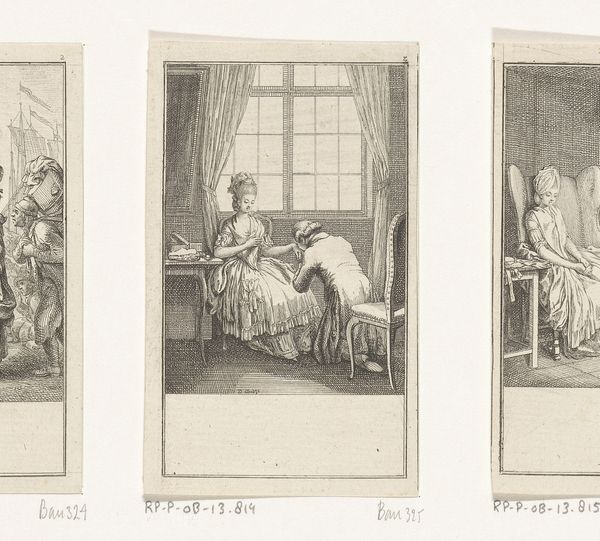
Dimensions: height 108 mm, width 61 mm
Copyright: Rijks Museum: Open Domain
Curator: Daniel Nikolaus Chodowiecki crafted this intimate scene, titled "Dames op kraamvisite," around 1780. It’s rendered with ink on paper using engraving techniques, typical of his graphic style. Editor: My first impression is how confined and stuffy the composition feels, yet strangely inviting. All those lines in the engraving...it creates such texture but also a feeling of being hemmed in, doesn't it? Curator: It does reflect societal constraints of the time, particularly for women. Childbirth was a pivotal social and biological event. Consider how carefully delineated their roles are within the domestic space; each figure a study in prescribed feminine behavior. These visits served less as cheerful celebrations and more as reaffirmations of societal norms. Editor: The light seems to come from within the group, almost spiritual. The use of line weight—thicker lines framing the figures versus delicate, almost airy touches within—it's really quite something. Chodowiecki clearly uses contrast to define character and depth, focusing our gaze toward the interaction. Curator: Indeed. Think about the power dynamics displayed. Who is in the bed? Who is standing? The act of “visiting” wasn't purely innocent social nicety. There’s also the historical context to examine - the late Enlightenment's emerging ideals on family and childhood shaping social practices. These “visits” were deeply entangled with the public performances of bourgeois morality. Editor: Looking at it now, the composition directs my attention less towards celebration and more towards scrutiny; especially with those darkened corners looming above. The eye doesn't dance freely—it's led. Perhaps a commentary through constraint, itself. Curator: Exactly! Chodowiecki isn't just showing us a scene; he's offering a critical reflection of social structures through the language of imagery, accessible to the public of his era through print media. Editor: Seeing it this way, it challenges how easily we could gloss over scenes like these, just thinking of ‘domestic bliss.’ The details he includes aren’t just aesthetically pleasing. It offers layers, really. Curator: Understanding how artwork can both reflect and subtly critique its time enhances the piece itself. Now the artwork goes from observation to critique. Editor: It enriches, doesn’t it? A look into not only a birth, but rebirth of sorts...of social understandings too, maybe even for the viewers themselves.
Comments
No comments
Be the first to comment and join the conversation on the ultimate creative platform.

